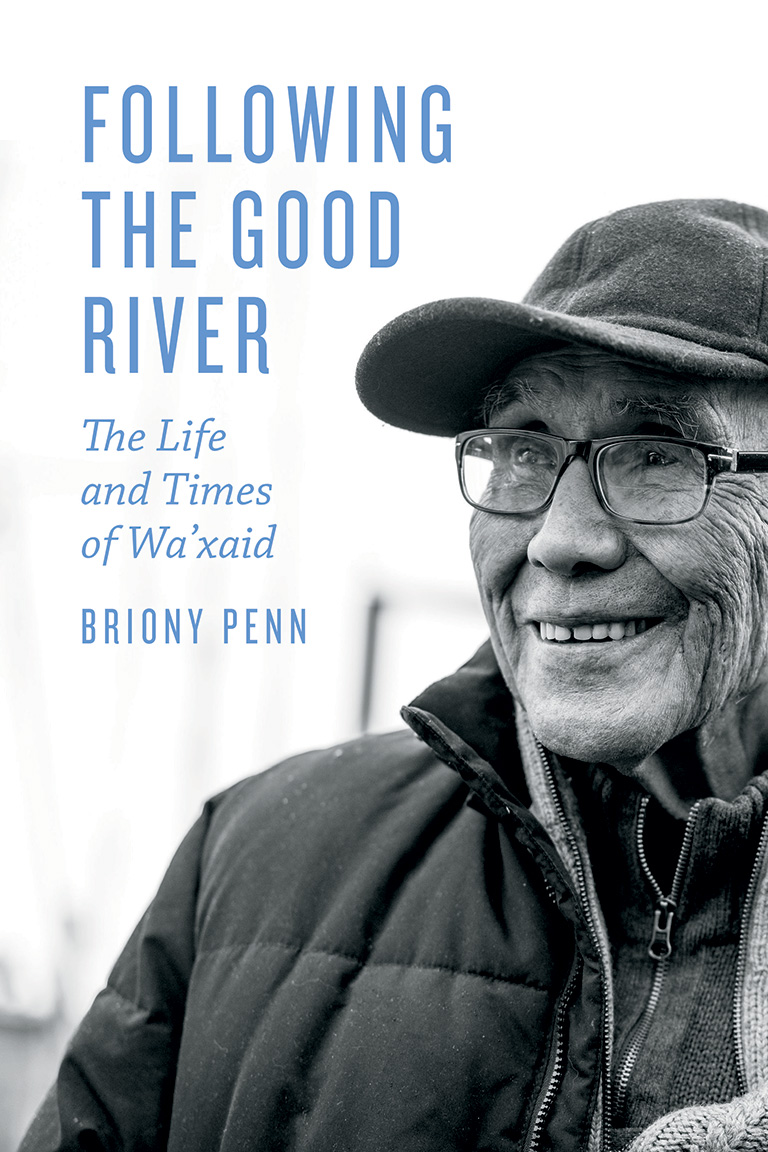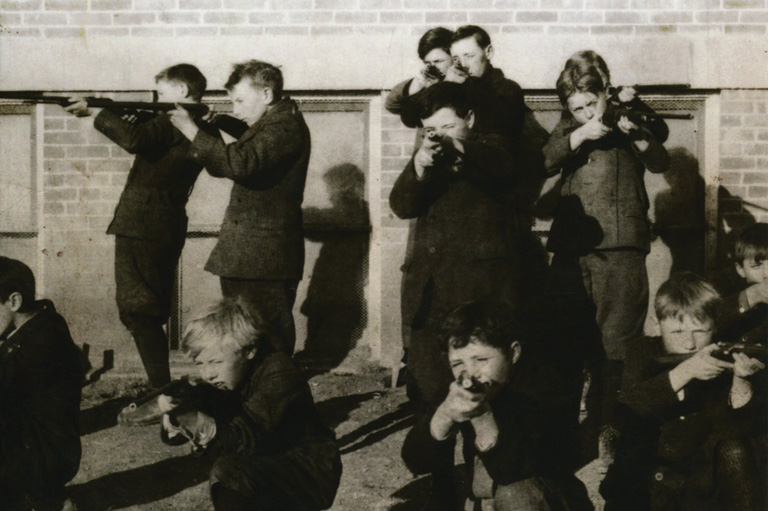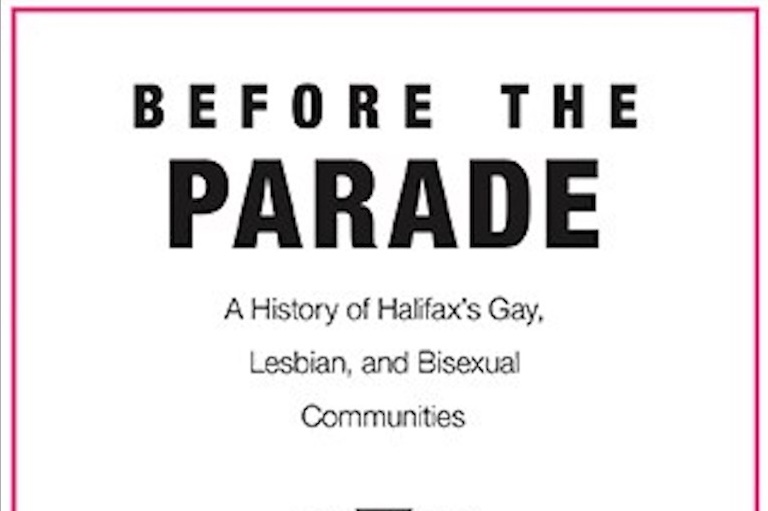Following the Good River

Following the Good River: The Life and Times of Wa’xaid
by Briony Penn, with Cecil Paul
Rocky Mountain Books
387 pages, $38
A double review with
The Politics of the Canoe
edited by Bruce Erickson and Sarah Wylie Krotz
University of Manitoba Press
268 pages, $27.95
For me, the words “politics” and “canoe” don’t go together. Who wants to think grimy thoughts of politics whilst gliding across a calm lake on the Canadian Shield, as the cries of loons echo over the water? But then there is the iconic image of a buckskin-clad prime minister, Pierre Trudeau, paddling a cedar strip canoe in the Yukon; and his son Justin later did the same. What does it all mean?
Canoe has “Canadiana” written all over it. It’s as much a symbol of Canada as maple syrup, maple leaves, and Mounties. It even has sexual connotations — “canoodling” — that are unique to this country. When we settlers who are canoe trippers go out on our annual multi-day wilderness paddles in our lightweight Kevlar boats, we might imagine ourselves as people of an earlier time — voyageurs, explorers, fur traders — making brave forays into unknown, untravelled territory. A happy fantasy to be sure, but not so harmless when considering who it leaves out. Maybe in this time of reconciliation it’s worth looking at how we’ve colonized the canoe. When we dip our paddles, we touch into something far deeper than we realize.
The academic essays in The Politics of the Canoe look at canoe culture from a mostly Indigenous perspective. And that perspective is radically different. For instance, for people like me, a canoe is a commodity. Obtaining one involves a trip to the store. It’s a casual “thing” we use for our pleasure.
Contrast that with the traditional view of the Chinook and other Pacific Northwest people. The old-growth trees out of which their canoes are formed are the source of each canoe’s spirit. “Our canoes aren’t empty vessels that we simply use to travel,” writes Rachel Cushman. “They are members of our family. They have names. They have hearts.”
In recent years, there has been a resurgence in the building and use of traditional ocean-going canoes in the Pacific Northwest. The whole process of harvesting materials for the vessels, then building and launching them, is a community- wide effort steeped in tradition, prayer, and healing journeys. Indigenous communities along the coast have reclaimed their heritage by organizing cultural canoe gatherings that include as many as three thousand participants.
In Algonquin culture in eastern Canada, the birchbark canoe occupies a similar place. A canoe is part of ginawaydaganuc, the Algonquin law of interconnection, and making one requires four sources of intelligence: emotional, physical, spiritual, and mental. “Emotionally, a person cannot be in a state of anger to work on a canoe, because the anger will show through in the work,” write the coauthors of one of the essays.
Not all of the essays are about Indigenous experience. One recounts Don Starkell’s incredible journey by canoe from Winnipeg, beginning in June 1980, to the mouth of the Amazon River in Brazil. His amazing feat, in which he and his sons were roughed up more by people than by nature, has received little scholarly attention. Writer Albert Braz attributes that to Starkell’s working-class identity and his lack of wilderness ideology. “The literature on canoeing … tends to be rather genteel, focusing extensively on affluent and environmentally conscious individuals.”
With 7 uniquely curated newsletters to choose from, we have something for everyone.
The book Following the Good River: The Life and Times of Wa’xaid is filled with just such individuals. They rallied behind a Xenaksiala Elder’s successful effort to save British Columbia’s vast Kitlope Valley rain forest from industrial development.
This book is a biography of Elder Cecil Paul and follows an earlier volume by its author, Briony Penn, entitled Stories From the Magic Canoe of Wa’xaid. As Paul explains, “It is a magical canoe because there is room for everyone who wants to come into it to paddle together. The currents against it are very strong, but I believe we can reach that destination, and this is the reason for our survival.”
The early life of Paul, also known as Wa’xaid, is sadly all too familiar. Authorities snatched him from his family when he was a child and placed him in a residential school, where he was abused. As a young man, he was jailed for sitting in the white section of a segregated theatre in Vancouver. After three decades lost in addiction, Paul found his way back to his ancestral home, along the glacial waters of Kitlope Lake, where his healing journey began.
Alarmed to discover road survey markers on his family’s homestead (an indication that clear-cut logging would soon commence), Paul felt moved to save the land. When he told his wife, Mae, that it might mean he would lose his logging job and that the family might lose their house, she replied: “No, you go ahead. I’ll walk with you.”
“That is all I wanted to hear: ‘I’ll walk with you,’” said Paul. In the end, powerful individuals, non-profits, and corporations such as Patagonia also walked with Paul.
Following the Good River is a meander through a collection of stories, time periods, events, and voices. The best parts are told in Paul’s own, natural storytelling voice, and it’s advisable not to be in a hurry to get through the book, as you might miss the subtle undercurrent of wisdom that moves the story along.
On December 3, 2020, at age ninety, Cecil Paul passed away. Surviving him are his family and Kitlope, the largest temperate rain forest on the planet.
Themes associated with this article
Advertisement




